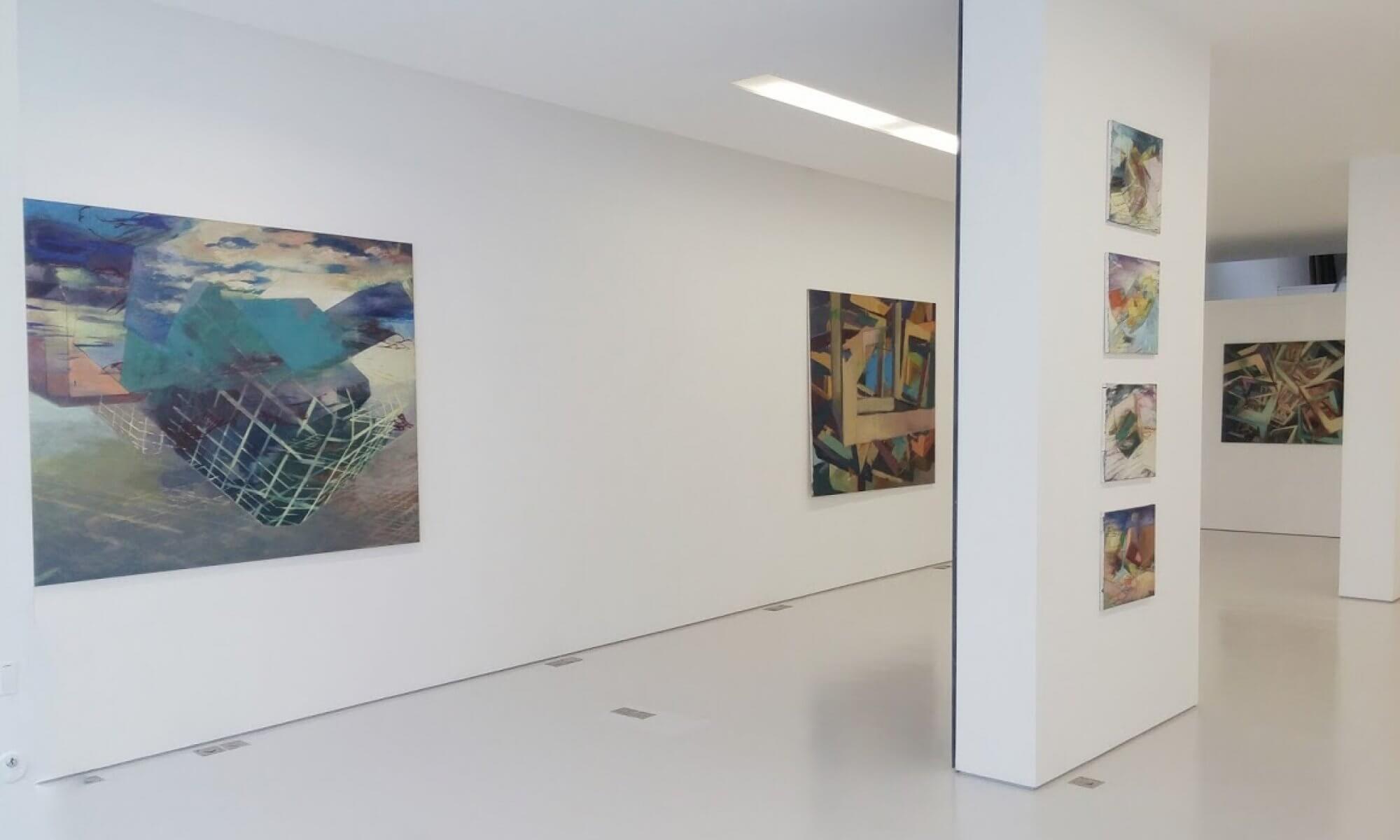A person looking at paintings expects to understand them mainly by recognizing things depicted on the canvas.
Just as the art historian Ernest H. Gombrich, I’m convinced that through out the history of painting the „aesthetics of picturemaking had more to do with composition than with illusion.
Simply speaking, a painter attaches significantly greater importance “how” he/she is going to paint then to “what” he/she wants to paint.
Here, I’d like to show that. The purpose of this exhibit is to display the process which is hidden under the surface of a painting. This process would reveal to the viewer the actual “soul” of a painting by displaying the steps taken by the painter’s imagination before arriving to the objects depicted on it. For this short period of time, if you allow me, I’d like to place myself at your service, and at first to guide you through the main aspects of my conception. The goal is to help you find meanings which lie before and beyond the objects depicted on my final drafts, and then and after let your imagination free.
It may seem difficult to communicate the complexity of this approach to public, to a general recipient of art who is used to identifying the content of a painting out of this painting’s narrative meaning. What I’d like to do is I’d like to attempt to change that. My goal is to close the gap between an artist’s perception and his/her knowledge of how the development of a painting might work and public’s expectations. Of course, this kind of approach cannot be applied to all artistic styles and fashions that exist in the actual art of painting. However for me some of the most exciting painters seemed to participate in this process. I’m thinking of Monet with his cathedrals and haystacks, of Turner with his deepening variations of sea-landscapes, of Constable who painted variations of clouds, and particularly of Morandi who is one of my favorites in this subject. Furthermore, there is that famous film “The Mystery of Picasso” from 1956 directed by Henri Georges Clouzot which documents Picasso using similar evolutionary methods while working on his famous beach painting. Recognizing this, I intend to bring a little light into this normally hidden process.
Being a painter myself, I decided to concentrate primarily on my own artistic experience. Out of this I developed my own system of assembling images I called “Imagery Kit” or “Visual Kit”. What I tried to do is to combine the artistic qualities which require autonomy – meaning that a work of art should exist ‘in its own right’ without a need for explanation — with the analytic or systematic methods used in sciences. And although I realize that in all probability my approach lacks the precision of proper analysis, I got a sufficient knowledge of mechanisms in painter’s subconscious and how the painter’s creativity works.
As a result the “Imagery Kit” is a sample of everything that I know about the world of art in its theory and in its function. Just like I choose a simple cube as a variable for any kind of a depicted object, the “Imagery Kit” may be able to represent the development process in general that comes before a painting is done. Or maybe before the inspiration takes over and systems no longer matter. But it’s important to know that my “Imagery Kit” with all its theoretical explanations and with the additional information that I’m providing here is a double-edged sword. On one hand I may be giving you a view of the inside, on the other though I may be opening a Pandora’s Box. Be aware (and beware) of thinking of it in absolute terms. There is a time in creation where my system is irrelevant, where the creation occurs spontaneously, and it is at that point when art comes alive.

